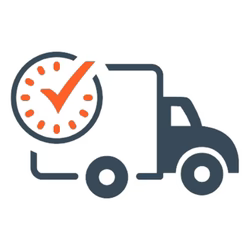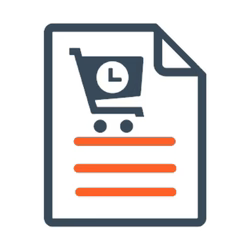Hose clamps, ubiquitous fixtures in plumbing and automotive repair, are often overlooked as mere fasteners. However, their versatility extends far beyond their primary function, offering a myriad of innovative applications that many may not be aware of. From securing hoses in unusual locations to creating makeshift tools, hose clamps have proven their mettle as problem-solving tools in countless scenarios.
This article takes a deep dive into the hidden uses of hose clamps & hose clips exploring their untapped potential. By delving into the ingenuity and adaptability of these seemingly simple devices, we uncover a world of possibilities that challenge conventional thinking and empower us to tackle tasks with a newfound perspective. Embrace the versatility of hose clamps and unlock their full potential as you embark on this journey of discovery.
While they may not be the most glamorous part of your garage, plumbing or garden setup, hose clamps play a critical role in keeping everything flowing smoothly. These small but mighty (often) metal rings hold hoses securely in place, preventing leaks and ensuring a reliable flow of water, air, or other fluids.
But how do you choose the right clamp for the job? What are the distinct types available? And when should you consider upgrading? This article will guide you through the world of hose clamps, helping you make informed decisions for your next project.
Types of Hose Clamps
Worm-Drive Hose Clamps: (often known as Worm-gear) These are the most common type, featuring a screw-driven band that tightens around the hose. They offer excellent adjustability and are suitable for a wide range of hose sizes, making them a versatile and reliable fastening solution commonly used in automotive, industrial, and other applications where secure connections are essential. There are a number of leading manufacturers of Worm drive Hose Clamps around the world. These include UK manufacturers Jubilee Clips with their original range & JCS with their Hi-Grip and Hi-Torque clamps, Mikalor in Spain with their ASFA range & Ideal Tridon in the USA with their Hy-Gear and Pow’r-Gear Clamps. Most Worm drive hose clamps are made from Mild or stainless-steel HCL provide a polymer alternative known as the Ezyclamp.
Snap Fit Hose Clamps: These clamps utilize a simple mechanism to create a secure grip. They are often preferred for their ease of use and quick installation and are found especially in the irrigation industry and automotive. The advantages of snap fit hose clamps include a low-profile head, speed, no loose parts, and the ability to be reused multiple times, making them applicable for a wide range of uses both for trade and for domestic use. Again, most Snap-fit clamps are made from Stainless Steel. However, HCL manufactures high-quality polymer Snap Fit Hose clips including the Herbie Clip & Ezyclik ranges.

Ear (Pinch) Hose Clamps: These are like snap-fit clamps but utilize a tab form on the clamp which is crimped to create the tightness required for installation. They are typically used for smaller hoses and are known for their durability. These clamps are simple and effective solutions, are tamper proof and come in various types such as single ear, double ear and adjustable with the best-selling and most well-known product in this range being the Oetiker Stepless Ear Clamps.
These clamps are often found in the automotive and medical industry and the double ear clamps are commonly used in the welding industry. Ear clamps are also known as Constant Velocity Joint Boot Clamps and Oetiker have recently launched their new 259 series DualHook product which is an improved CV Boot Clamp. Workshop kits for this application known as Expertainer are also available.

Screw (Bolt) Clamps: These clamps feature a screw that directly tightens onto the hose, offering a simple and secure solution. However, they are less adjustable than worm-drive clamps. It typically consists of a band or a wire, often made of metal, with a screw that can be turned to adjust the diameter of the clamp, allowing it to fit securely around the hose or pipe. The screw mechanism provides uniform pressure along the entire circumference of the hose, ensuring a tight and secure connection. These products are generally low cost and there are a number of ranges including the Mini Screw Clamp or Fuel Line Clip and the Double Wire Screw Hose Clamp which is a suitable solution for Spiral Hoses.
Constant Tension (compensating) Hose Clamps: These clamps are commonly used in automotive applications, such as securing radiator hoses, as well as in industrial settings where hoses are subjected to varying operating conditions. By providing continuous tension on the hose, they help prevent leaks, ensure proper flow within the system, and extend the lifespan of both the hose and the connections. Constant tension hose clamps offer a reliable solution for maintaining secure connections in dynamic environments where traditional clamps may not provide adequate performance.
There are many types of constant tension clamps including the simple Double Wire hose clamp and Spring Band Clamps but also the more advances Worm Drive Clamps with Spring features Including the Mikalor ASFA constant Tension clamp the Ideal Tridon Flex-gear Clamps and their T-Bolt with a spring feature.
High Torque Worm Drive Hose Clamps: are a type of clamp designed to provide extra holding power in high-torque applications. These clamps are specifically engineered to offer increased strength and create a 360° seal to prevent leaks in demanding environments. They are commonly used with firm plastic and rubber hoses where standard clamps may not provide sufficient sealing or holding power. Generally, these clamps come in a perforated band style with JCS Hi-Torque and Ideal Tridon Pow’r-Gear clamps being the Market leaders. However, recently Mikalor have launched a new embossed High Torque Clamp within their ASFA range.
Polymer (Nylon) Hose Clamps: Manufactured from polymer materials like nylon (PA66), these clamps offer superior sealing performance and resistance to various chemicals, oils, and solvents. The interlocking design of plastic hose clamps prevents leaks and ensures a secure connection. Polymer hose clamps are widely used in industries such as automotive, agriculture, plumbing, and manufacturing due to their versatility and reliability. They provide a secure seal against leaks while being reusable and non-conductive. The leading manufacturer for Polymer Hose Clamps in the world is HCL Fasteners with its brands Ezyclik, Herbie Clip & Ezyclamp

Heavy Duty Hose Clamps: Also known as high-pressure clamps, Bolt & Barrel Clamps or T-Bolt Clamps, are Mild or stainless-steel clamps designed for heavy-duty applications to seal hoses securely and prevent leaks. These clamps are commonly industrial settings where high pressure and temperature fluctuations occur, these clamps are essential for sealing hoses securely to prevent leaks in hydraulic systems in demanding industrial settings.. The most popular Brands in the marketplace are the Mikalor Super & Supra products along with the Ideal Tridon T-Bolt range.
Choosing the Right Clamp:
When selecting a hose clamp, one of the most crucial factors is the hose size. Do not forget to choose the correct product style depending on the application required and the tolerances needed.
- Measure around the Outside Diameter of the Hose you wish to clamp: After slotting the hose onto the pipe or spigot measure the outside diameter. The hose will expand at this point, so ensure you measure it accurately.
- Check the Dynamic Range of the Hose Clamp: Verify that the clamp can be tightened to the correct size. Choose a clamp where your diameter falls in the middle of its range. If stuck between two sizes, opt for the smaller one as it will compress the hose effectively.
- Consider Material Compatibility: Hose clamps are typically made from stainless steel, zinc-plated steel, or plastic. Stainless steel & Polymer Clamps offer the highest corrosion resistance and are ideal for outdoor applications. Zinc-plated steel provides good corrosion protection at a more affordable price. Plastic clamps are lightweight and economical but may not be as durable.
- Evaluate Hose Material: Consider the material of the hose or pipe being clamped. Consider factors like thickness, elasticity, and strength to match it with a suitable clamp material.
- Select Proper Clamp Size: Measure the outside diameter of the hose accurately and choose a clamp that fits within its ideal range without excessive slack or over-tightening.
- Choose an Appropriate Clamp Type: Depending on your application, select from plastic hose clamps, worm-drive hose clamps, or T-bolt hose clamps based on their specific features and benefits.
- Installation and Removal: Follow proper procedures for installing and removing hose clamps to ensure a secure fit without damaging any components.
Considerations for Different Hose Clamp Applications:
Hose Clamps for Plumbing: For domestic water-related applications, it is essential to use corrosion-resistant clamps like stainless steel or zinc-plated steel. Pinch or Ear clamps are both solid choices for the plumbing industry. These types of clamps are highly corrosion-resistant and create tight seals, essential for maintaining proper water flow and preventing leaks in plumbing systems.
Hose Clamps for Gardening: For Gardening, Landscaping, and indoor horticulture, you can choose from a wider range of materials, including plastic. However, consider the durability and longevity of the clamp when selecting for outdoor use. Wire hose clamps, T-bolt hose clamps, and worm gear hose clamps are all viable options for use in the gardening industry based on their features and capabilities. Worm Drive Hose Clamp with a wing or Butterfly feature are used for one-off projects.
Hose Clamps for Automotive: Choosing the right clamp for automotive applications is crucial. Consult your car's manual or an automotive specialist for specific recommendations. T-bolt clamps, pinch clamps, ear clamps, and worm drive clamps are among the top recommendations for hose clamps in the automotive industry due to their durability, ease of installation, reliability, and ability to meet the demanding requirements of automotive applications.
Hose Clamps for Marine use: For maritime usage, stainless steel clamps should be made from high-grade stainless steel like AISI316 (W5) for superior corrosion resistance in saltwater environments. AISI304 (W4) stainless steel clamps are cheaper but have lower corrosion resistance, suitable for internal connections in engine rooms.
Hose Clamps for Airline / Aviation Usage: JCS Hi-Grip clamps are most suitable for the aviation industry. These clamps are designed to meet the BS5315:1991 industry standard, ensuring high quality and reliability for securing various hoses in aircraft applications.
DIY / Home Improvement: The best clamp for home projects is a worm drive clamp such as the Jubilee or JCS products. This is due to their versatility and larger dynamic range.
Upgrading Your Hose Clamps
Older or worn-out clamps can loosen over time, leading to leaks. It is essential to inspect your clamps regularly and replace them if you notice signs of wear and tear. Here's when to consider upgrading:
- Loose or Damaged Clamps: A loose or damaged clamp is a sure sign that it needs to be replaced.
- Frequent Leaks: If you experience persistent leaks at the hose connection, the clamp may be the culprit.
- Old or Worn-Out Clamps: Even if they appear to be functioning, old clamps can become brittle and may fail unexpectedly.
- Assess the Current Situation: Before upgrading your hose clamps, inspect the hoses and connections to identify any issues that may be causing leaks. Ensure there are no cracks, deformities, or mismatches between the hose and the connection points.
- Select High-Quality Clamps: Choose high-quality hose clamps from reputable manufacturers like Jubilee, Mikalor, JCS or Ideal Tridon. opt for stainless steel marine-grade clamps for durability and reliability.
- Remove Old Clamps: Unclamp the existing hose clamps carefully to avoid damaging the hoses.
- Replace with New Clamps: Install the new hose clamps securely on the hoses, ensuring a tight fit without over-tightening that could damage the hoses.
- Check for Proper Alignment: Make sure the new clamps align correctly with the hose and connection points to prevent leaks.
- Test for Leaks: After installing the new clamps, evaluate your system to ensure there are no leaks and that everything is functioning properly.
By following these steps, you can effectively upgrade your hose clamps to improve sealing and prevent leaks in your vehicle’s cooling system.
Now that you are ready to upgrade your Hose Clamps
Hopefully, the above information has helped you and if you have made it this far down, it may be because you are in need of Hose clamps and are looking to purchase some online. Please consider making your purchase with HCL Clamps, a British manufacturing and distribution company based in Somerset. We have excellent reviews and a quick and hassle-free shopping experience. With high quality, own brand products and stocking all the leading brands, you can avoid Amazon & eBay, support a local business, and save money as we are often the cheapest place to purchases.











